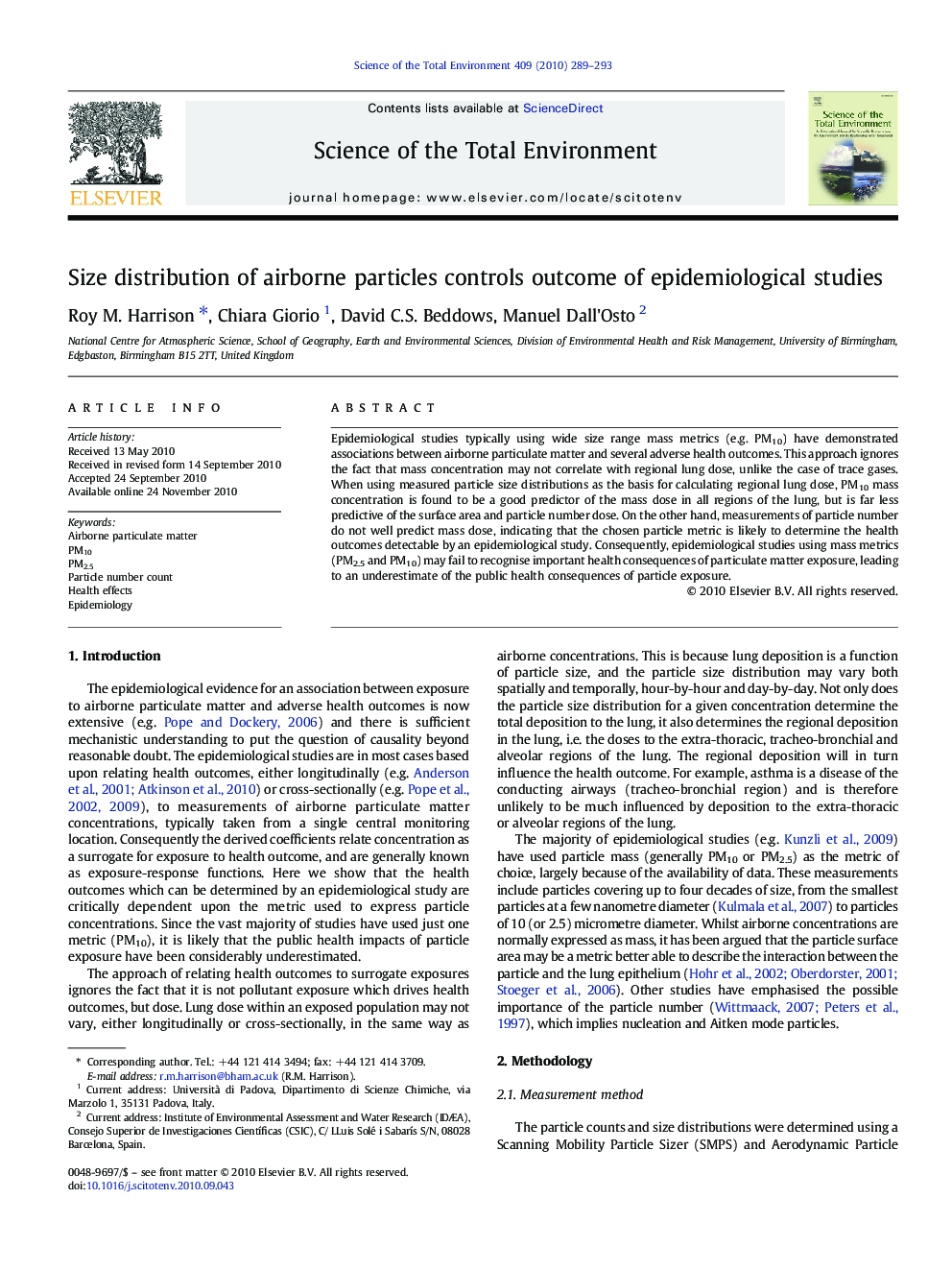| کد مقاله | کد نشریه | سال انتشار | مقاله انگلیسی | نسخه تمام متن |
|---|---|---|---|---|
| 4430351 | 1619860 | 2010 | 5 صفحه PDF | دانلود رایگان |

Epidemiological studies typically using wide size range mass metrics (e.g. PM10) have demonstrated associations between airborne particulate matter and several adverse health outcomes. This approach ignores the fact that mass concentration may not correlate with regional lung dose, unlike the case of trace gases. When using measured particle size distributions as the basis for calculating regional lung dose, PM10 mass concentration is found to be a good predictor of the mass dose in all regions of the lung, but is far less predictive of the surface area and particle number dose. On the other hand, measurements of particle number do not well predict mass dose, indicating that the chosen particle metric is likely to determine the health outcomes detectable by an epidemiological study. Consequently, epidemiological studies using mass metrics (PM2.5 and PM10) may fail to recognise important health consequences of particulate matter exposure, leading to an underestimate of the public health consequences of particle exposure.
Journal: Science of The Total Environment - Volume 409, Issue 2, 15 December 2010, Pages 289–293